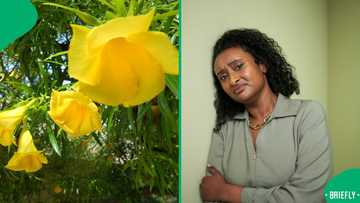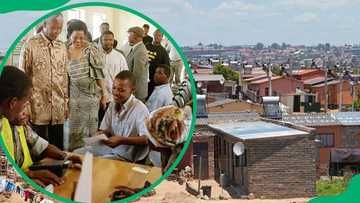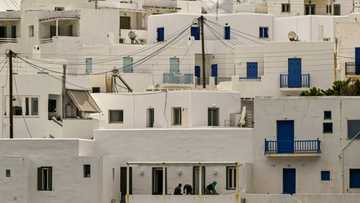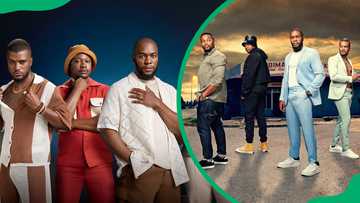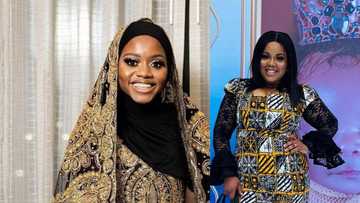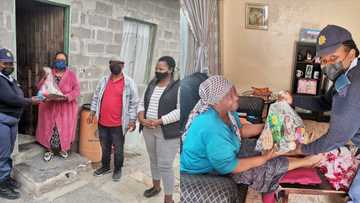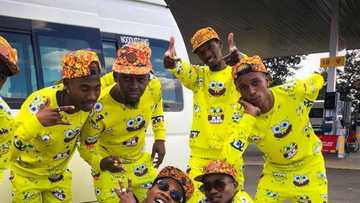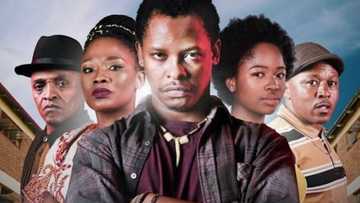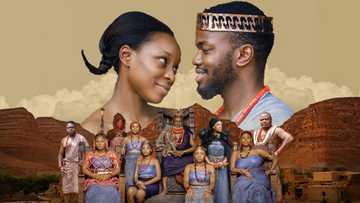Sotho culture, traditions, food, traditional attire, dance and values
Interacting with the Basotho people of South Africa is fun. You learn about their culture, from religious beliefs to traditional practices, native food, attire, dance, and more. The community's rich culture gives the people a distinct identity throughout Africa. This article provides fundamental information about Sotho culture so the world can know more about them.
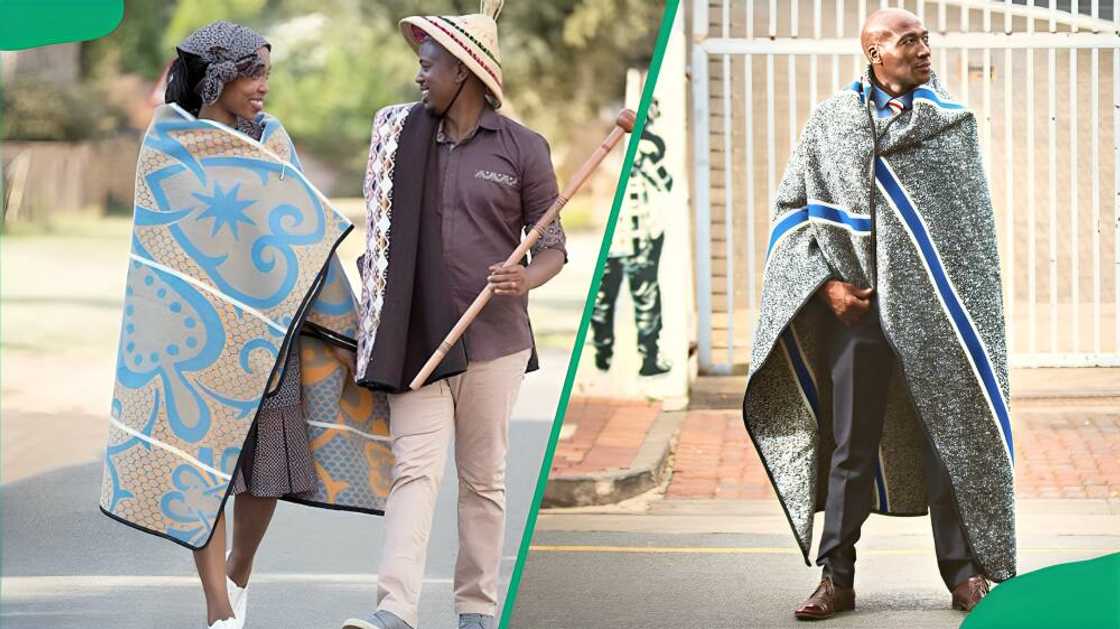
Source: UGC
TABLE OF CONTENTS
- The Basotho culture and the people's origin
- What are the Sotho traditions?
- What do the Sotho culture wear?
- Basotho food and drinks
- Sotho traditional orals
- What is the Sotho dance called?
- How many Sotho are in South Africa?
- Which SA province has the most Basotho?
- What is the difference between Sotho and Tswana?
- What are the Sotho clan names?
- How do the Sotho celebrate Heritage Day?
- What are the four groups of people in South Africa?
- What is the majority community in South Africa?
- How many tribes are there in South Africa?
- What are the major tribes in South Africa?
- Where do most foreigners live in South Africa?
The article centers on the origin, languages, countries of residence, customs, beliefs, and social behavior of the Basotho people. The Sotho-Tswana ethnic group is native to Southern Africa, primarily inhabiting the regions of Lesotho, Botswana, Namibia, Zimbabwe, Zambia, and South Africa.
The Basotho culture and the people's origin
The Sotho ancestors are believed to have originated in Northeast Africa and traveled south in the fifth century CE. Lesotho's royal family was largely composed of Bakuena.
These clans lived together in peace until 1822 when they were invaded by the fugitive Nguni, who had fled Natal. Those who survived the attacks moved north and east, and some moved to the south to form a Basotho nation.
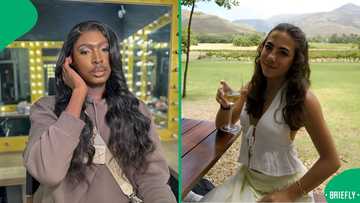
Read also
Lost in translation: UK woman shows Cape Town mansion and 2 other expats rubbing SA the wrong way
The Mfecane (a series of disputes and migrations in the nineteenth century) and colonization caused the Sotho people to break up into several clans over time.
What are the Sotho traditions?
The Basotho participate in the four rites of passage: birth, initiation, marriage, and death. Read below to understand how they perform their traditions and customs at every rite of passage.
Sotho birth traditions
Basotho women deliver with the help of female birth attendants. When the first child is a girl, relatives, and friends immerse the father in water. The father is thrashed with a stick if the first child is a male. The practice meant males spend their lives fighting while females do household tasks like collecting water.

Source: UGC
The baby is kept in a specially marked hut with the mother for two or three months after delivery. The baby's seclusion could be momentarily broken when brought outside to experience the first rain.
Basotho initiation traditions
The Basotho female initiation is called Lebollo la basadi, while the male circumcision is called Lebollo la banna. Most Basotho male initiates (makolwane) are between 12 and 15, with only a few initiated above age 15. The females (bale) can be up to age 20.
The Sotho initiates attend a traditional initiation school for a few weeks to six months in secluded areas away from settlements. The initiation practice is classified into three stages: separation, transitional, and incorporation stages.
During the separation stage, the teens are separated from all social activities and kept in secluded places. The boys stay in a lodge in a sheltered area away from the village, while the girls' seclusion is nearby.
In the transitional stage, the initiates learn the social concepts of their identities. The traditional initiation male teachers, basuwe, are older people with substantial economic, political, and social standing in Basotho communities.
After the physical male circumcision, the wounds are dressed, and initiates rise early each day to perform a variety of tasks. They undergo a harsh physical regimen to learn diverse skills.
The female initiation process is less grueling than the boys' because girls do not get circumcised or have any surgical operation. Nonetheless, they are subjected to some form of pain to prepare them for adulthood and community service.
Boys were taught warfare, endurance, courage, husband and fatherhood roles, traditional songs, dances, codes, and signs, among other things. Meanwhile, the girls learned wifey and motherhood roles and traditional songs, dances, codes, and signs, among other things.
The incorporation stage marks the completion of the training period. The initiates leave all their clothing behind in the lodge, which the instructors set alight.
The female Basotho initiates wear traditional beading and smear themselves with red clay. The male initiates also use red ochre and cover themselves in traditional Basotho blankets. The initiates arrive at their villages surrounded by elders, where they are given a new set of clothes.
What happens in a Sotho traditional wedding?
Arranged marriages were common among Basotho, and polygamy was not uncommon among the elite, but they were rare among commoners. Usually, the boy's father approached the girl's parents to propose, and if they were receptive, he would request a calabash of water.
After her parents agree to the marriage proposal, the boy and a few friends formally visit the girl. If she agrees to the match, she will hand him a scarf called moqhaka.
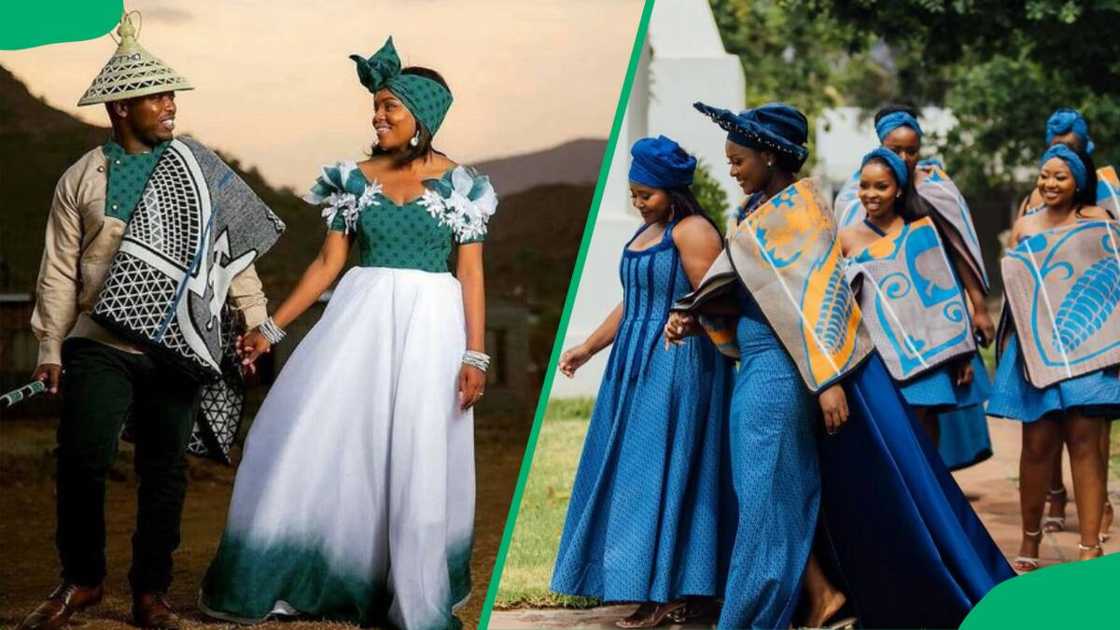
Source: UGC
The girl would then give him food, which he would refuse, lest it be said that 'he came for food, not love.' The total number of Basotho bohali/lobola was roughly 20 cattle, one horse, and ten sheep or goats, but it was rarely paid in full. After exchanging up to ten cattle, additional incentives encouraged the two kin groups to form relationships.
Traditionally, a wedding is held soon after it is planned. Although most couples have never met before, they usually approve of the decision or are forced to marry whether they want it or not.
Today, there is more liberty, and individual choice is the norm. People can choose their partners, but before a Sotho wedding, the groom's uncles pay bohali for the bride, which can be cows or money.
After successful lobola negotiations, both families exchange gifts, such as a bottle of wine or whisky, dishes, or blankets. The families also agree on the wedding date and when to bring the bride to the groom's parents' home.
The wedding has two parts. The first is usually held on Saturdays at the home of the bride's parents, and both families wear traditional clothing. The bride's family organizes the ceremony, buys gifts for the couple, and kills a cow to welcome the groom's family.
On Sunday, the wedding continues with the groom's family, and the bride's family guides their daughter on how to be a decent wife.
On the morning of the ceremony, they dress her in ethnic clothes that match the groom's family. Later, during the ceremony, the bride's family hands her over to the husband and his family.
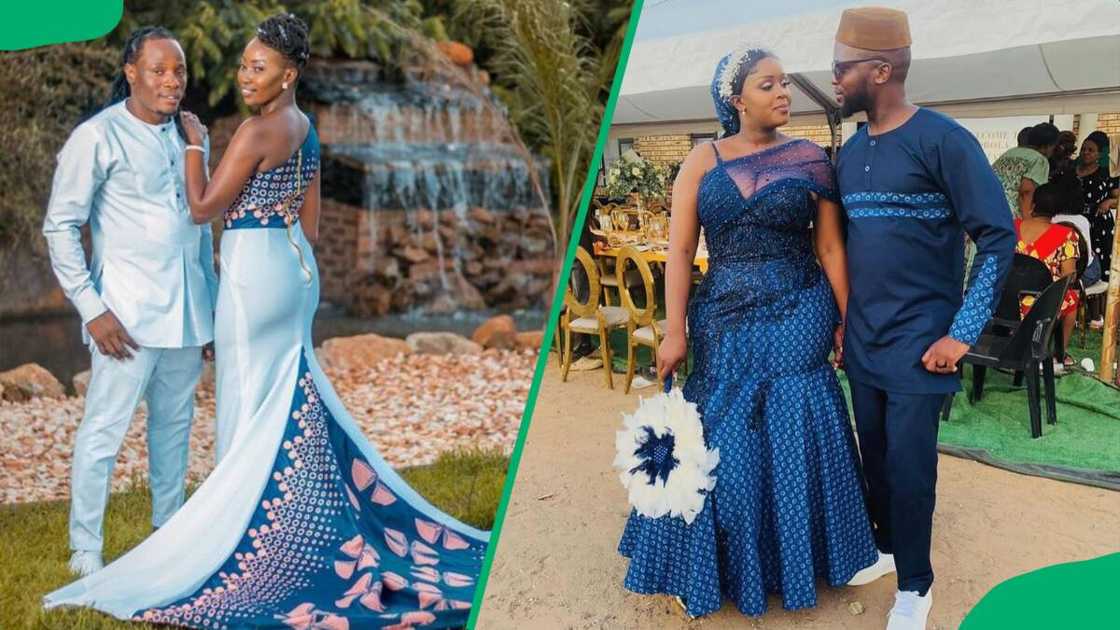
Source: UGC
The bride then offers the groom water, which he must accept and drink, making it official that they are now married. The groom's family will give her a new first name, indicating she has been accepted into the family. The new name might be a female family name, like a grandma's.
After the traditional wedding rituals have concluded, most modern Sesotho couples opt for a white wedding, with the bride donning a white gown and the groom dressed in a suit.
The bride's first name in her ID book stays unchanged, but as is customary in most Western weddings, the wife will also assume the husband's surname.
Basotho funeral traditions
If a man dies, he will be buried within a week, and his female relatives will mourn while sitting on mattresses in a bedroom for the entire week till his burial.
People may come by to share their sympathy or condolences to the morning family for that whole week, and these people will be catered for.
Some pre-colonial practices, such as burying people with food items, thatch, etc., and in round holes in a squatting position, have been stopped.
After burial, all those who went to the burial ground returned to the funeral hut or house using the same path or route. People go home and wash their hands with water prepared with aloe and salt by the family. After all that is done, people are served with food and African or modern alcohol.
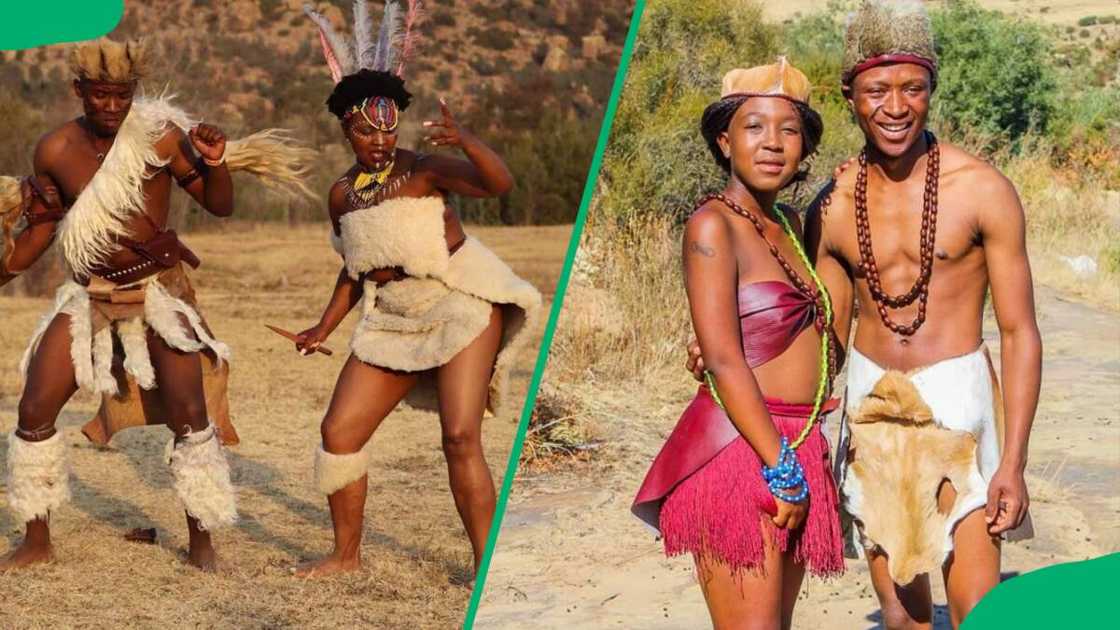
Source: UGC
What do the Sotho culture wear?
The Sotho people have different ways of dressing, depending on an individual's age or occasion. Here are the different Basotho traditional attires and adornments:
- Sefaha sa letsopa: These neckpieces are for girls and have clay beads known as the thethana ea banana.
- Thethana ea banana: These Sesotho traditional dresses are for girls and are made of clay beads.
- Mose oa lekoko: These Sesotho skirts are made of woven fiber or cow skin.
- Tseha: The undergarment is for young boys and is made from sheepskin. The clothing is cut triangular and tied around the body to cover the private parts. Its length increases with age.
- Mokorotlo: It is a conically-shaped Sesotho headgear made from grass named moseha.
- Moliha-nyeoe and ts’ets’e: These are other types of headgear. All Sesotho hats are made from animal skins like kuoane, kharetsana, and sekola. Hats made from sekola are worn by warriors.
- Lehlosi: Men make the special Basotho blanket for the chiefs. It is made from the skins of wild cats or leopards.
- Setipe and Mokhahla: These Sotho blankets are for ordinary women, men, and children. They are often brightly colored and intricately patterned and are given as gifts or used for ceremonial purposes.
How do you wear a Basotho blanket?
They wear a traditional blanket as a cloak wrapped around the body and fastened at the neck with a pin or brooch, freeing the arms. The blanket is often worn for ceremonial occasions or when traveling.
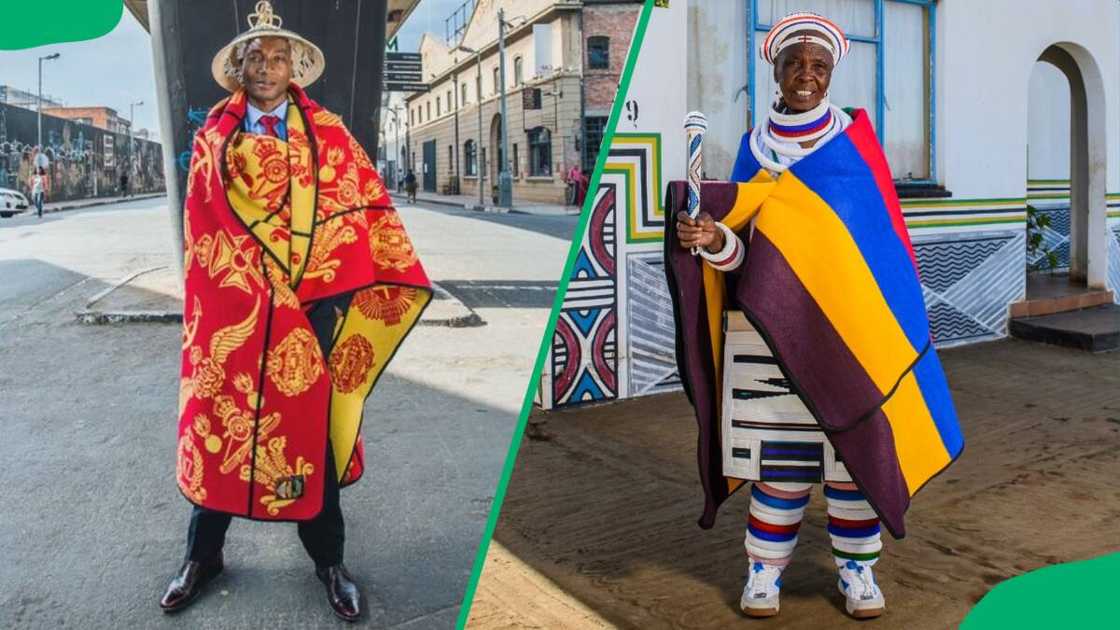
Source: UGC
Basotho food and drinks
The Sotho primarily rely on agriculture and animal husbandry for food. Men and boys tend to the animals, while women work the fields and collect water from springs.
Their domesticated animals include fereki (pig), likhomo (cow), lihoho (chicken), linku (sheep), and lipoli (goat). They also eat various foods such as maize, millet, melons, pumpkins, peas, beans, and ground nuts. They use such food and animals to prepare delicacies like:
- Likhobe: soft and boiled maize kernels seasoned with salt
- Samp: dried and pounded maize kernels, but less finely ground than maize meal.
- Leqebekaone: steamed bread
- Bohobe: baked bread
- Liphaphatha: pot-roasted bread
- Makoenya: fat cakes
- Papa/pap: stiff porridge (ting) made from maize
- Motoho: fermented sorghum porridge
- Mangangajane: sundried vegetables with a long-lasting, intense flavor.
- Sechu sa khoho: chicken stew
- Braai: barbeque/grilled meat usually found at social gatherings and festivals
- Roasted maize: green maize cobs are roasted with hot ashes until the maize kernels are golden brown
- Likahare: broth made from animal stripes
- Lithlakoana Le Lihloho/ Skopo: stew from sheep feet and heads
- Wors: South African sausage
Basotho people also have a welcoming variation of seasonal fruits like wild berries. Additionally, during traditional ceremonies, they brew traditional alcohol known as jwala.
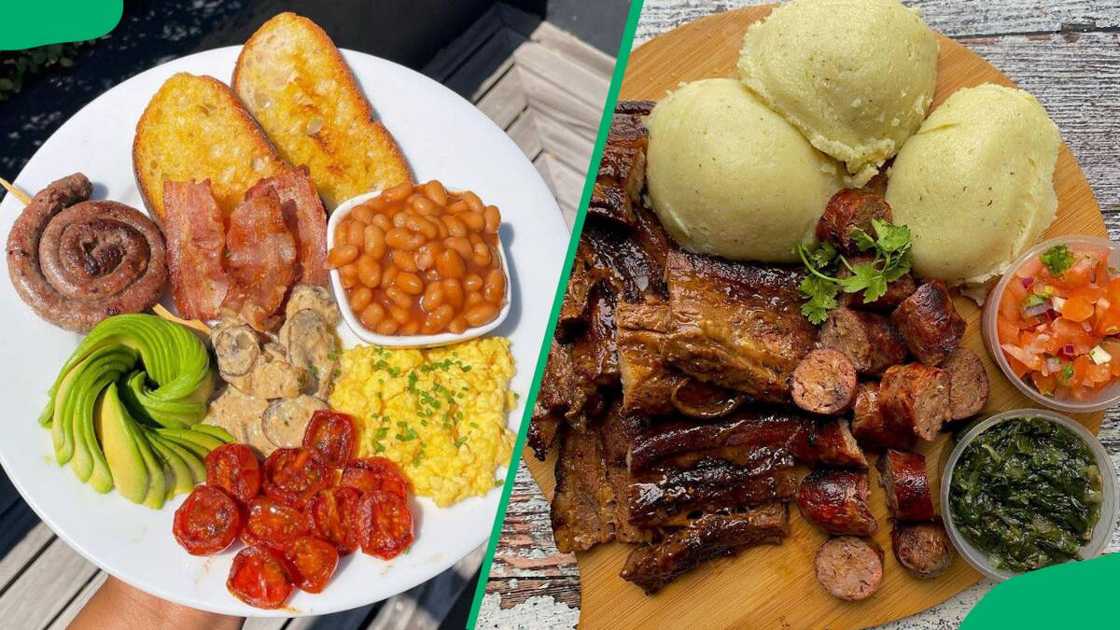
Source: UGC
Sotho traditional orals
The Sotho traditional orals are significant to a specific event and were passed on from generation to generation. Some of these orals include;
- Lithoko: They were praise songs or poems inspired by war and battles. They were mostly focused on great chiefs who led their people to victory during battles and wars. The descriptions of the origins, historical events, and even mythical belief systems are present.
- Moshoeshoe: The cattle raid praise poem talks about the battle between Moshoeshoe and Monaheng. Moshoeshoe used a unique skill to outsmart Monaheng.
- Litsomo: Grandmothers told their grandchildren these traditional stories in the evening while seated around a fire. The stories were educational tools for guiding children's morality and cautioning them to escape certain vices.
What is the Sotho dance called?
The three main Sotho dances are mokorotlo, mohobelo, and mokhibo. Men dance mokorotlo for chiefs at important events like meetings and inspections.
Men also dance mohobelo accompanied by war cries or initiation hymns. The dance is a dance that uses movements like strides, leaps, and slides.
The maqekha is a special dance that forms part of the first rites of girls' initiation. Meanwhile, the mokhibo dance is performed at weddings and during Christmas. Women dance on their knees, the body gently rising and falling as the hands are swept upwards.
The dance is accompanied by ululation and the pulsating movement of the dancers’ shoulders. An informal choir stands behind the line of dancers, singing and clapping.
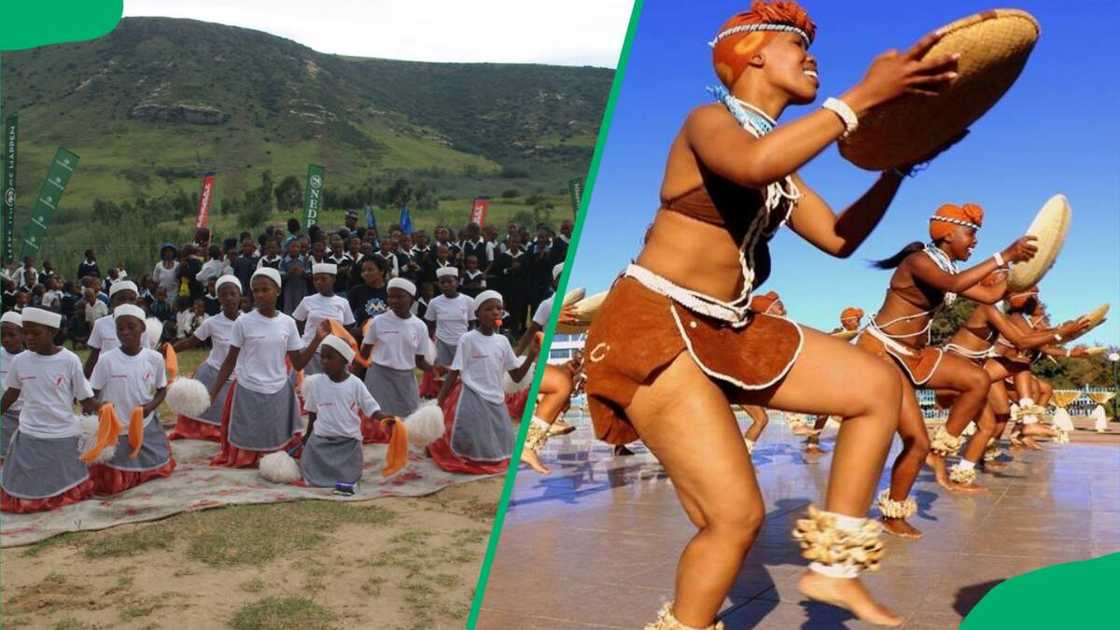
Source: UGC
Sotho traditional music involves group singing, chanting, and hand clapping as accompaniments to dances. Additionally, instruments include drums, rattles, whistles, and handmade stringed instruments.
One instrument, the lesiba, is made from a pole, a string, and a feather. When blown, the feather acts as a reed, producing a deep, resonant sound.
How many Sotho are in South Africa?
South Africa has at least 7 million Tswana-speakers. These people speak Sesotho and related languages.
Which SA province has the most Basotho?
The Free State province has the Basotho people in South Africa. Languages spoken in the Free State include isiXhosa (7.5%), Afrikaans (12.2%), and Sesotho (64.2%).
What is the difference between Sotho and Tswana?
Sotho uses click consonants in some words, while Sepedi and Setswana do not have clicks.
What are the Sotho clan names?
Basotho has three types: Northern Sotho, Southern Sotho, and Tswana. Despite the slight differences between the three groups, all identify themselves as Sotho and their clans, languages, and countries of residence are as follows:
Sotho clan names | Languages spoken | Countries of residence
|
Bakgalagadi-Batlhaping | Setswana | Botswana |
Babirwa | Setswana | Botswana |
Batabe | Sesotho, Afrikaans | Lesotho, South Africa |
Bafokeng | Sesotho | Lesotho, South Africa |
Bagananwa-Bahananwa | Sesotho sa Leboa | South Africa |
Bahlakoana | Sesotho | Lesotho, South Africa |
Bahurutshe | Setswana | Botswana, South Africa |
Bakgaga-Bakone | Sesotho sa Lebowa | South Africa |
Bakgalagadi | Setswana | Botswana |
Bakgalagadi-Baboalongwe | Setswana | Botswana |
Bakgalagadi-Bangologa | Setswana | Botswana, Namibia |
Bakgalagadi-Baphaleng | Setswana | Botswana |
Bakgalagadi-Bashaga | Setswana | Botswana |
Bakhatla-Bakgatla | Sesotho, Setswana | Lesotho, Botswana, South Africa |
Bakhurutshe | Setswana | Botswana |
Bakone | Sesotho sa Leboa | South Africa |
Bakubung | Sesotho, Setswana | South Africa |
Bakoena | Sesotho, Setswana | South Africa |
Bamalete | Setswana | Botswana |
Bangwato | Setswana | Botswana |
Bapai | Sesotho ba Leboa, Pulana | South Africa |
Bapedi | Sesotho sa Leboa | South Africa |
Baphalane | Sesotho | South Africa |
Baphiri | Setswana | South Africa |
Baphuthing | Sesotho | South Africa |
Bapo | Setswana | South Africa |
Barokologadi | Setswana | South Africa |
Batlharo | Setswana | South Africa |
Sotho clan names | Languages spoken | Countries of residence |
Batswapong | Setswana | Botswana |
Makgolokwe-Makholokoe | Sesotho, Sekholokoe | Botswana |
Makhoakhoa | Sesotho | Lesotho, SA |
Mandoro-Makololo | Sesotho | Lesotho, SA, Zimbabwe, Zambia |
Mapulana | Sesotho ba Leboa, Pulana | South Africa |
Barolong | Sesotho | South Africa |
Basia | Setswana | South Africa |
Batau | Sesotho ba Leboa | South Africa |
Bataung | Sesotho, Setswana, Sesotho sa Lebowa | South Africa |
Batawana | Batswana | Botswana |
Batlhako | Setswana | South Africa |
Batlhaping | Setswana | Namibia, SA |
Batlhware | Setswana | Namibia, SA |
Batlokoa | Sesotho, Setswana, Sesotho sa Leboa | Namibia, SA |
Batloung | Setswana, Sesotho | Namibia, SA |
Batsatsing | Setswana, Sesotho | Namibia, SA |
Batšoeneng | Sesotho, Setswana, Sesotho sa Leboa | Namibia, SA |
Bakopa | Sesotho sa Leboa | South Africa |
Bakutswe | Sesotho ba Leboa, Pulana | South Africa |
Bahwaduba | Setswana | South Africa |
Baroka ba Lebole-Bakone | Sesotho ba Leboa | South Africa |
Baroka | Sesotho ba Leboa | South Africa |
Bakwena Ba Ma-Thebe / Bantwane / Bantoane) | Setswana | South Africa |
Banogeng | Setswana | South Africa |
How do the Sotho celebrate Heritage Day?
Like other South Africans, Basotho celebrate Heritage Day by remembering the cultural heritage of the many cultures that make up the country's population. They attend events throughout the country, such as braai, to commemorate/remember this day.
How many cultural groups do we have in South Africa?
South Africa has so many diverse cultures and religions. The country has communities like the Zulu, Xhosa, Pedi, Tswana, Ndebele, Khoisan, Hindu, Muslim, Afrikaans, and many more.
What are the four groups of people in South Africa?
South Africa's population comprises five racial groups: White, Black, Colored, and Indian.
What is the majority community in South Africa?
Black or Indigenous South Africans are the majority, followed by White South Africans, Colored South Africans, and, lastly, the Indian South Africans.
How many tribes are there in South Africa?
The black population of South Africa is divided into four major ethnic groups: Nguni (Zulu, Xhosa, Ndebele, and Swazi), Sotho, Shangaan-Tsonga, and Venda. There are numerous subgroups within these, of which the Zulu and Xhosa (two subgroups of the Nguni group) are the largest.
What are the major tribes in South Africa?
South Africa's principal ethnic groups are Zulu, Xhosa, Bapedi (North Sotho), Batswana, South Ndebele, Basotho (South Sotho), Venda, Tsonga, and Swazi, all of whom speak Southern Bantu languages.
Which tribe is the largest in South Africa?
The Zulu are the single largest ethnic group in Mzansi, with a population of about nine million in the late 20th century. They are a nation of Nguni-speaking people in the KwaZulu-Natal province of South Africa.
Where do most foreigners live in South Africa?
Most expats live in cities like Johannesburg, Cape Town, Durban, and Pretoria because these cities have many more gated and secure houses, making them safer for foreigners.
Sotho culture is deeply rooted in simplicity. Politeness, decent manners, and a willingness to help others are highly encouraged. Additionally, hospitality and charity are expected. Even people with little to share give food to visitors and expect the courtesy to be reciprocated when it is their turn to visit.
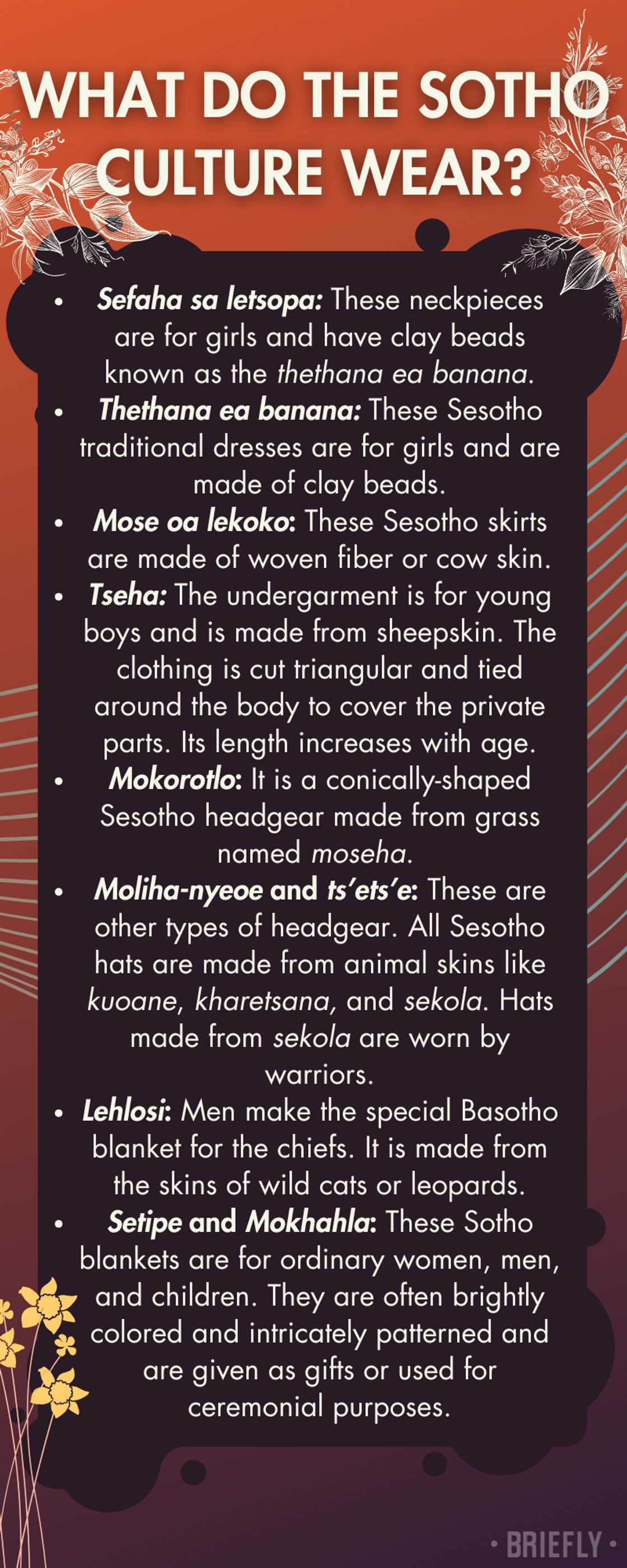
Source: Original
Briefly.co.za also shared facts about Swazi culture, including food, traditional weddings, clothes, and more. Polygamy is the ideal marriage, with each requiring the payment of a bride price.
The Swazi people are also renowned for various traditional festivals, the most famous being Incwala and Umhlanga.
Source: Briefly News

